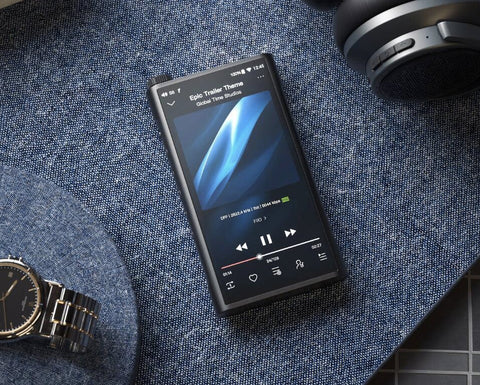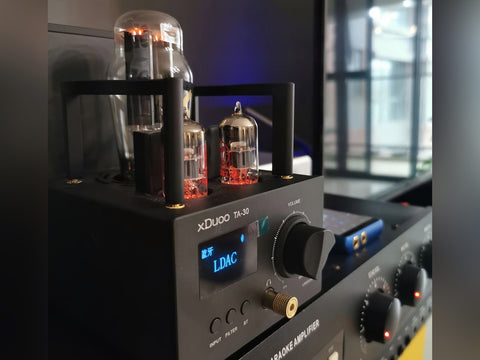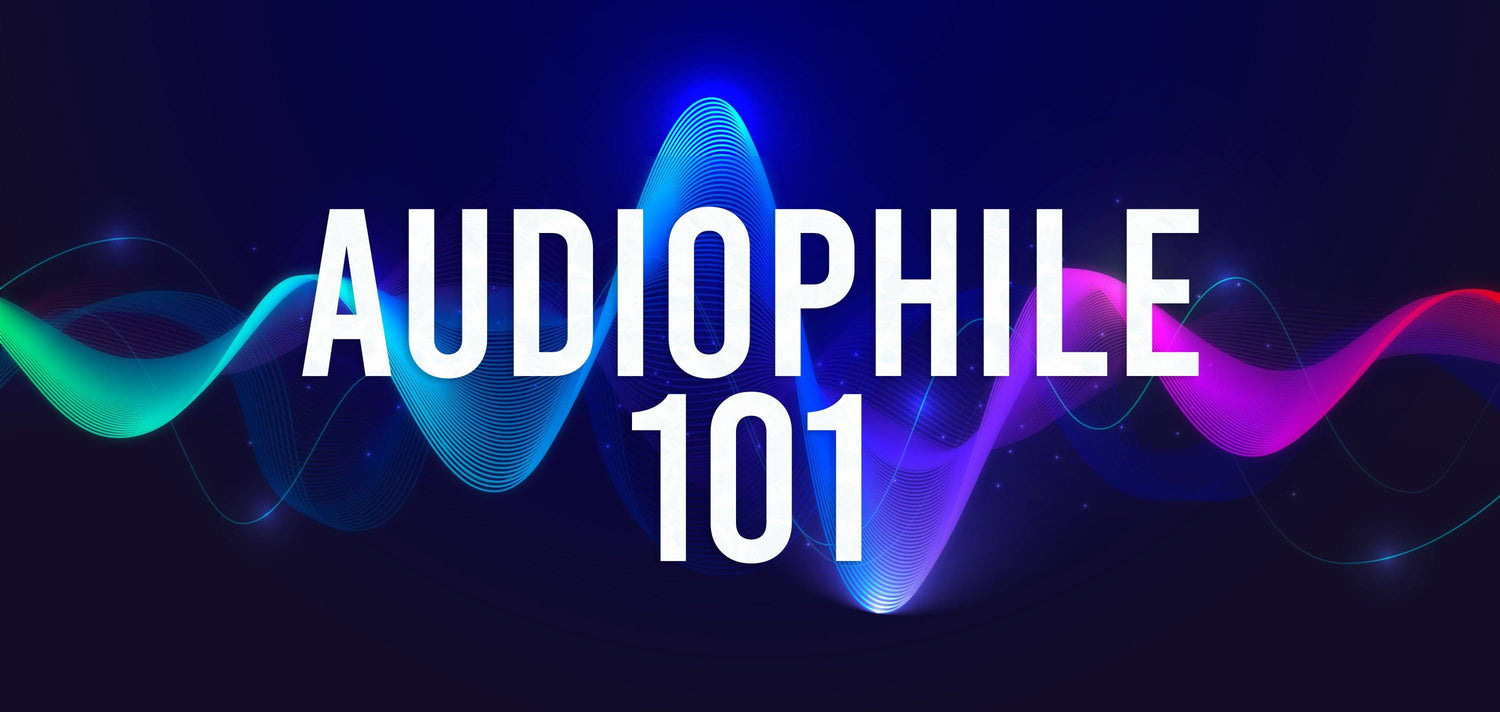If you are starting an audiophile journey, you will see a lot of words that are coming in review and discussion. Therefore, In the passion for audio, these are important to understand a review or opinion. Audiophile terminology or audiophile terms are a bit unique. So let’s learn a little by little.
You can Visit HiFigo for your starter pack of audiophile journey.
We will progress alphabetically.
AES / EBU (Audio Engineering Society / European Broadcasting Union) (Also known as AES3)
It's a standard for the interchange of digital audio. It is highly used in professional audio gears. The signal can pass PCM audio in two channels lines. You can use balanced, unbalanced, and optical fiber to transfer.
Airy
It refers to the spaciousness of sound. You will see this describing soundstage, the sound of open-back headphones, and live music.
ALAC
Apple Lossless Audio Codec – A lossless audio codec developed by Apple. Apple devices rely on this codec. However, Apple claimed that ALAC compression is half the size of the original uncompressed file. So, its the lossless implementation of Apple.
Ambiance
It's a character of the atmosphere. However, In music it's the overall environmental presentation of the soundtrack.
Ambiance
It's the virtual impression of an acoustical space. Music can be recorded in the hall or studio. Besides, the engineers also implement such effects to create an immersive feel.
it refers to an amplifier. AMP is there to boost an analog signal. It offers output to the speaker or headphone. It's basically an electrical circuit that tweaks the amplitude of the signal.
Amplitude
The displacement of a wave from its mean value. In sound, it refers to the extent which air particles are displaced and is experienced as the loudness of sound. The higher the amplitude, the louder the sound.
Analytical
Analytical sound offers a very neutral and balanced presentation. But there is a bit more presence in the higher treble range. You will hear a lot of microscopic details in the presentation. Therefore, you will hear a little bit clearer yet more complex music reproduction. Some people can't really cope with this kinda presentation. So, they get fatigued after a prolonged listening session. Qdc Anole VX is one of the top tire analytical iem.
Analog (Audio)
Sound recording onto vinyl and tape is analog audio. The recording mediums may have small imperfections. You will hear audio artifacts while playback. However, A lot of audiophiles like analog sound. Because it sounds natural.
APE (From Monkey’s Audio)
A free and efficient lossless (high resolution) codec.
ASP (Analog Signal Processing)
An analog signal is actually a continuous stream of data. Analog signal processing involves physically altering the continuous signal by changing the voltage, current or charge via various electrical means. Examples include crossover filters in loudspeakers, “bass, treble and volume” controls on stereos and “tint” controls on TVs. Also considered capacitors, resistors, and inductors (passive), and active elements such as transistors/operational amplifiers.
Attenuator
its the component to control volume. For example, the gain knob of an amplifier lowers the volume/output.
Audiophile
He is a hobbyist about music. He is passionate about Hi-res sound reproduction. An audiophile pursues the purest music reproduction. Thus, They want a concert-like experience, within a room with HIFI gear.
Balance
This refers to the tuning of audio gear. Therefore, “A well-balanced gear” won't have any unwanted peak in the frequency range. So it will sound natural and balanced as well.
Balanced (Audio)
Its a method of connecting audio equipment. Here we use impedance-balanced lines. There are three-conductor connectors. We will find an XLR or TRS jack (1 plus, 1 minus, and 1 ground).
Balanced Armature Driver
The balanced armature driver units are also known as moving iron driver unit. These units are very small and are only found in in-ear monitors. The driver unit consists of a miniature arm in a coil of wire surrounded by two magnets that create a magnetic field when the current from the input signal reaches the driver. The moving part is balanced between both the magnets that’s why the drivers are called balanced armature drivers. The armature moves slightly towards the poles of permanent magnets with the magnetic flux created by the audio signal. This movement of the armature unit brings changes to the air above the driver diaphragm that provides the sound output. BA driver unit has very little movement compared to the dynamic driver units and thus produces no distortion in the sound output. BA drivers are very power efficient and can be driven very easily, due to their small size multiple BA driver units can be put in a single pair of IEM’s producing precisely detailed sound output. BA driver unit produces natural vocals and smooth detailed treble responses.
Bass
It's the lowest or the deepest part of the music spectrum. Usually, the 10hz-256hz sound is considered as bass. Bass instruments create a low-pitched sound range. Therefore, they create an ambiance presence in your music. It's the lowest-pitched part of the harmony. Bass guitars, Drums, etc. create basslines for music.
Bit Rate
Bitrate means how much data is processed per second. (digital audio).
Bit Depth
Bit depth means the density of data is recorded per sample (digital audio).
(The more information / higher sample/bit rates and depth, the better quality and larger the file size, generally speaking).
Bloat
Bloat is a character of the mid-bass range. It's a simile that stands for the lack of clarity of that region.
BNC
It's a locking connector for digital connections.
Bright/Brightness
Bright means it got more boost in the higher ranges. It's higher than the usual mid-range frequencies. A lot of folks enjoy sharp trebles. But our ears are more sensitive in this sound range. It's easy to get fatigued with bright audio gears. However, there is a conception of bright = more detail. Details reside in the whole spectrum. Nonetheless, this term is also known as forward-sounding or harsh treble. However. Bright gears reveal the imperfection in the recording if any. So, professionals often appreciate these kinds of headphones.
Lz A6 with variable tuning nozzle can be a bright earphone with other sound tuning options.
Cable Attachment-Style:
Wired headphones/earphones have two types of connection:
- Detachable and interchangeable.
- Hardwired.
Caps
It's a nickname for capacitors. Capacitors are temporary energy storehouses of a device. It can function as an amp power supply, DC coupling, tone controls, and filtering.
Circum-aural
This means full-sized headphones. These types of headphones will fit over your ears.
Coloration
It's a sound characteristic of a device. It sits a bit on the opposite of “neutral.” It refers to a bit altered sound reproduction. That means you won't get what sound engineers intend to do. The device has colored the signal in its own way.
Congestion
It expresses a sound character. It refers to the Music notes overlapping and lacks clarity.
Cranial Geometry
This refers to a unique human head and ear construction. Everyone has a unique shape in this regard. Therefore, it impacts on the proper fit of a headgear. However, If the geometry of the headgear does not match with a user’s unique profile, the user will face “sealing issue.” Thus the sound will “leak” out. This will compromise sound presentation and comfort level
Crisp – Clear.
Cups
This is the outer side of the drivers on headphones. Mostly for closed-back headphones it's known as “cups.” On open-back headphones, they are “grills.”
Customs
It's the nickname of custom-iem. Normally, audiologists make an ear impression of an individual. IEM makers make the unique fit around the driver.
So, the iem is totally customized for a particular individual on the fitment side. Therefore, it offers superior fit and isolation for that individual. We also call them “CIEM’.
D/A (Digital to Analog)
It's a short expression of digital to analog conversion path.
DAC (Digital to Analog Converter)
DAC Stands for digital to analog converter. It processes a digital signal and converts it into an analog. Our audio gears like headphones, earphones, and speakers use the analog signal to create sound. This is it. Nothing complicated. If you use mobiles, computers, laptops, audio players, most of them come with DAC chips inside them. This is applicable to all devices which create sound. Generally, DAC chips cost a manufacturer from $3 to $30. It’s a must-have element if any device wants to create sound. Let’s make it simpler. Think about A mobile phone with a 3.5mm jack. It pushes the digital data from the memory. DAC converts those ones and zeros into analog signals. Lastly, your earphone plays music.
A portable device with hi-res audio playback is considered as DAP. Exclusive Daps pack state of the art DACs plus beefy amps. So you can drive hi-end headgears on the go. They are not cheap mp3 players nor iPods. Most of the daps can play high bitrate files, wav, FLAC or DSD, etc.

Dark/Darkness
This is a sound signature. This type of audio device offers less prominent high frequencies.
Decay
It means the speed of delivering the sound. More like the fade effect of each note.
Decibel (dB)
It's a measure of the magnitude of sound. Nonetheless, It's the unit of loudness.
Depth
It's the distance between the instruments is the musical arrangement. It's considered in 2D space. So, back to the front distance is the key here.
Detail
It's the tiniest note of the music. Or you can call it the most delicate parts of the recording. You will miss this with imperfect audio gears.
Digital (Audio)
Digital audio is 1s and 0s of recording data. Digital audio is the numerical samples. For example, In CDs, samples are taken 44,100 times per second, with 16-bit sample depth.
Driver
The sound reproduction part of speakers/headphones/earphones. We will see many technologies, sizes, and quality of drivers.
DSD (Direct Stream Digital)
A trademark used by Sony and Philips for their system of digitally recreating audible signals for the Super Audio CD (SACD). The DSD coding system differs from that of its competitor: PCM. A DSD recorder uses delta-sigma modulation.
DSP (Digital Signal Processing)
As audio signals may be represented in either digital or analog format, processing may occur in either domain. Analog processors operate directly on the electrical signal, while digital processors operate mathematically on the digital representation of that signal. A digital representation expresses the audio waveform as a sequence of symbols, usually binary numbers. This permits signal processing using digital circuits such as digital signal processors, microprocessors, and general-purpose computers.
Dynamic Driver is also known as a moving coil driver unit. A dynamic driver unit consists of three main parts, a neodymium magnet, a voice coil, and a diaphragm that is connected to the voice coil. Voice coil is a thin membrane that moves in a stationary magnetic field generated by the magnets in the driver unit and hence produces the sound. The membrane is usually made up of copper material but in high-end headphones/earphones, more premium materials are being used like beryllium and more. It gains the magnetic field once the current from the input signal is passed through it. The airwaves created by this movement of the voice coil is then taken by our ears as sound. Dynamic driver units produce a powerful sound output that features quick and deep bass response. The driver produces outstanding details in the lower end with its snappy coil movements. Over the course of developments in the audio industry, dynamic drivers are widely used in hybrid IEM’s to handle the lower end effectively and efficiently. Dynamic drivers vary with different sizes, they are widely used among full-size over-ear headphones too.
Earphone/Earbud/In-Ear Monitor (IEM)
It's a widely accepted stereo speaker system that goes inside the ear.
EQ
EQ refers to equalization. Mighty wiki says, “the process of adjusting the balance between frequency components within an electric signal.” It's a bold statement. Secondly, let's emphasize the word “balance”. A proper “EQ” is mostly finding the perfect harmony between the frequencies of music. Moreover, you need to know the manipulation process of your desired balance.
Ergonomic
It also links a headgears’ fitment. If a headgear has an ergonomic fit, it means it will fit properly in various scenarios.
FLAC(Free Lossless Audio Codec)
An audio coding format for lossless compression of digital audio. It is also an open format with royalty-free licensing and a reference implementation which is free software. FLAC has support for metadata tagging, album cover art, and fast seeking.
Forward Sounding
It refers to a bit of an intense presentation of the sound. Think it as the opposite of a laid back/dark sound.
Frequency Range
It's the range of frequencies stated without level limits.
Frequency Response
This is the response of the headgear for the individual frequency range.
Gain
This is the increase/decrease rate of audio signal by an amplifier. Usually, it is expressed in dB. The overall operation is based on Volt in/Volt out.
Glassy
It's a Bright signature with a bit extreme on top.
Grill
It's the cup of an open back headphone. It is located on the outside of the drivers. Both open and semi-open headphones have grills.
Harsh
It's the spike of upper-mid to upper frequencies. Thus you will get too much treble. So, it's unpleasant for longer listening sessions.
Headphone
It's a personal stereo speaker system. You can get on or over-ear headphones in the market.
HIFI (High Fidelity)
It's one of the common words in the audio industry. It refers to the high-quality sound reproduction.
HiFi v. LoFi
Firstly, high fidelity = the accurate and reproduction of the original mixing. Besides, low fidelity = lower quality reproduction than the current community standard. LoFi contains imperfection. However, some devices have some shortcomings. We hear environmental interference, distortion and whatnot.

High-end Audio
Audiophiles usually use high-end sound equipment. However, well-designed devices try to keep sound as original as the recording. High-end devices from turntables, DAC, EQ, preamps and AMPs, speakers, woofers, etc. are considered to be part of the ecosystem. Even acoustic room treatment is also important for High-end audio systems.
HRA (High-Resolution Audio)
Hi-Res Audio (HRA) is lossless audio. Mainly it contains all the data to reproduce the full range of the recording. It's a well-mastered track better than CD quality. Thus, the musicians and engineers put their time and effort in recording and invest on expensive recording gears to make a high-end audio recordings.
IC
It's the nickname of Interconnect Cable. Both ends will have analog connections. It might be in either XLR or RCA plugs. Thus, they indicate Right and Left stereo audio channels.
IEM
IEM stands for In-ear monitor.
We see two types of iem
- Universal IEM (pre-molded to fit universally)
- Custom IEMs (CIEM)

Impedance
This is the power requirement of the driver. Impedance is a number. The higher it goes, the more power it requires. It's important to get the optimal power. Thus, you will get the best out of the driver. If a headphone has impedance value it will get less current flow through it.
Isolation
If the seal is right, the head gears isolate the listener from the environment noise. It also prevents sound leakage.
Jitter
Jitter is an occurrence that appears when the clock (this signals the DAC when to sample) doesn’t click as it should. So the sample points aren’t matching the preferred timestamp. Thus, a change in pitch for a fraction of time can be present. It also correlates with the bitrate. The higher the bitrate, the more problems occur. However, Imperfections in notes near 20kHz is barely audible. So, it won’t bother you. Most of all, Newer DAC chips are a lot better nowadays. So, these types of situations are highly unlikely. Only super-high frequency notes suffer from Jitter. Because they have the shortest wavelengths. Most of us over the age of 20 barely listen to those notes where jitter is present.
Layering
It's the separation of individual rows of musical instruments. So, you will feel the depth and distance between rows. Great layering offers audible differences of separated instruments’ lines.
Listening Fatigue
If you have a prolonged listening session, You will feel a psychological discomfort from a certain type of sound signature. It's a psychoacoustic phenomenon. However, you may get headaches and nervous tension from fatigue.
Listening-Style
It's a habit of listening to music. Typically, its user preference. One may prefer analytical sound, or warm and relaxing sound to “get lost” in the music. Preference is everything.
Lossless
It's a compression system with no loss. A couple of compressions is included in this group. FLAC, ALAC, WAV, MQA, etc are good examples.
Lossy
This group also compresses music but a few losses occur. You can make a lossless file lossy, but can't revert back. Lossy files are a lot smaller than lossless. Examples include MP3, AAC, Ogg, etc.
Low-Level Detail
The tiniest elements of musical sound are considered here. It's like the surface noise of string instruments or the final tail of reverberation decay.
Lush
It's a rich tone. You will find warmth in the overall musical presentation.
Microphonics
Some headgears’ cables offer Friction sound. It's caused by the movement or rubbing of the cable. Sometimes it gets annoying.
Moving Armature Driver
It's a new type of driver. Moving armature drivers aim to eliminate the need to use multiple balanced armature drivers in an IEM by extending their effective frequency response.
MP3
It's a lossy format of the audio codec. Its common coding format and a lot of tracks can be found in MP3. The file size is smaller than most other formats.
MQA (Master Quality Authenticated)
It's a lossless codec for seamless streaming. Mostly its ⅓ of FLAC size. It promises to keep the original master recording intake with a digital fingerprint. MQA files are backward compatible with FLAC decoders. You need MQA supported decoders to get their full potential.
Muddy
It refers to an unclear presentation. of the sound. Just opposite of a crisp sound.
Nuance
It refers to the different shades of sound. Or you can say the characteristics of individual notes.
Ohm
Unit of measurement for electrical resistance or impedance.
Opamp (Operational Amplifier)
Its a high-gain electronic voltage amplifier. It has a differential input with usually single-ended output. By doing this, an operational amplifier produces an output potential. The output is hundreds of thousands of times larger than the potential difference between its input terminals. The popularity of the operational amp as a building block in analog circuits is due to its versatility.
Openness
It refers to a good soundstage with good width and depth in the presentation. You will feel the sufficient room among the instrumentation.
Pads
the earpads or cushioning on headphones.
PCB (Printed Circuit Board)
Electrical components are generally soldered onto the printed circuit board. Then they are electrically connected and mechanically fastened to it. Used in most electronic products.
PCM – (Pulse-Code Modulation)
The standard form of digital audio in computers and CDs. It is a method used to digitally represent sampled analog signals. A PCM stream has two properties that determine the stream’s fidelity to the original analog signal: the sampling rate, which is the number of times per second that samples are taken; and the bit depth, which determines the number of possible digital values that can be used to represent each sample.
Preamp
It's a Nickname of a preamplifier. It's a switch, routing one or more signals to the amplifier. It reduces noise and interference. Moreover, it boosts the signal and adjusts the voltage for volume control to the amplifier. Preamplifiers also usually allow a user to switch between sources (radio, tape, CD, etc.).
RCA
It's a type of coaxial connector for unbalanced connections. It's totally analog too. The center pin is the signal and the sleeve is the ground.
Resistance
It's the physical property of elements to resist the electron flow. The measurement unit is Ohms.
Reverb
It's the short name of reverberation. Mostly it's a diminishing series of echoes. It is spaced close enough to combine into a smooth decay.
Rolloff
It refers to the abrupt loss of a certain frequency. A lot call it as rollout. Basically when a frequency response drops unusually occurs this. If you know about EQ cutting off, you will get a better idea. Check our article about it.
Sample Rate
The sample rate refers to how many samples of data are taken in a second. (digital audio).
Sealing Condition
Same thing as isolation.
Sense of Presentation
Its the sound presentation way to the listeners. It has an impact on the way listeners perceive the spot of a sound’s source. Moreover, it enables a sense of exact positioning of sound.
Sensitivity
Its the sound output amount in headphones. The unit of it is decibels (dB).
Sibilant
It's the unpleasant peak of frequency response. If any audio gear has this, that will be difficult to hear.
Smooth
It's a sound characteristic. The reproduction is free of any anomalies, no unhealthy peaks, and easy to listen to. It might be a good thing or a bad thing. If you get a slow, uninvolving character with smoothness it's not positive at all.
Sound Signature
Every audio gear has its unique sound properties. Some pack extended treble ranges. Some shake the bass hard. Others offer fairly balanced across the board. Mostly, the total sound profile is known as the sound signature. If you get the basics and scheme the categories, you can find better suited audio gear for yourself. After that, you will be able to fine-tune it according to your taste. Matching synergy, upgrading cable, and music player.
Soundstage
The stage is the full 3D presentation of music. It depends on the driver. A wider staging offers a clear vision of different positions for various instruments. Thus, the sound becomes more realistic, concert-like. The bigger the soundstage, the better.
Source
The device that sends the analog signal is the source. For example as a CD player or media player.
S/PDIF
It stands for Sony/Philips Digital Interconnect Format (more commonly known as Sony Philips Digital Interface).
Supra-aural
Its the Fit type of On-ear headphone. Usually, most of the consumer headphones are in this category.
Synergy
It's the relation of a group of audio components. The whole chain takes part in audio reproduction together. So, the combined effect is prominent in the final result. It's important to match a DAC and a headphone amp to sound right according to the listener's taste. Their synergy brings the final result.
Texture/Texturing
It's a perceptible pattern or structure in reproduced sound. It might be random in nature. Texture provides energy. It holds up the continuation of the sound particles. The grain of a photograph is the perfect example.
THD
Its Total Harmonic Distortion. It refers to the measurement of the degree to which a piece of equipment distorts the signal.
Timbre
Timbre is what makes sound different. However, if two instruments are playing the same notes, both will throw their own unique timbres.
Timber is the real-life result of different sounds. Our brain gets information out of it.
Tonality
Its the quality of the instrument's tone. It means How much audio reproduction is accurate compared to the actual sound.
Transparent
If you can distinguish details and qualities, your sound will be transparent. Transparent the word to represent clear audio with realistic sense of visibility through the note.
TRS
TRS = Tip Ring Sleeve. It's the most common connector used on headphones. 3.5mm (/8”) and 6.3mm (1/4”) connector sizes.
Tube/Tube Amp
Prior to the transistor, Vacuum tube works to amplify the signal. It has pleasant harmonics and coloration of the music. They take part in the design section of amplification or power rectification.

Turntable
It is a phonograph, the original device was used for the recording and reproduction of sound. In its later forms, it is also called the gramophone (since 1887) and later the record player (since the 1940s). The turntable today is the device used to playback the record. The tonearm holds the pickup cartridge over the groove, as a pivoted lever with a counterbalance to maintain tracking pressure.
Voltage
The electromotive force or pressure that ‘pushes’ large numbers of electrons, measured in units of volts.
Warm/Warmth
It might be on the opposite side of bright/analytical. Therefore, it has an emphasis on the lower frequencies. Not only in bass but also the mids get the treatment. Where brightness adds sharpness, warmth adds smoothness fluidity. Warm audio gears offer a relaxing sound. So, it's ideal for a longer listening session. The bass guitars, cello, saxophone get a rich, articulate tone which sounds pleasing. However, overly warm audio gears introduce too much bass presence. This disrupts the ambiance.
TRI I3 hybrid earphone has a warm sound signature.
Watt
Its actually Voltage times current. Rate of energy usage to be exact. Also refers to R.M.S.= Root Mean Square.
Weight
It's the body of the image. If you have a solid sound image with natural bass, the sound will be bold. On the other hand thin or less weighty sound may seem unnatural.
Width
It's the representation of how far a stereo image is spread. Good recording will offer a realistic image. It won't be far fetched or cramped inside of the head.
WMA (Windows Media Audio Lossless)
Its a proprietary lossless audio developed by Microsoft. Similar to FLAC ALAC.
WAVE (Waveform Audio File Format)
You will see “.wav as a file extension. It is a Microsoft and IBM audio file format standard for storing an audio bitstream on PCs. The WAV file is an instance of a Resource Interchange File Format (RIFF), defined by IBM and Microsoft. Though a WAV file can contain compressed audio, the most common WAV format is uncompressed audio in the linear pulse-code modulation (LPCM) format. LPCM is also the standard audio coding format for audio CDs.
XLR
It's a connector. There might be three, four, or possibly more pins. However, it's used for balanced connections. For headphones the 4-pin XLR contains L+ L- R+ R-.
We might miss a few terms here and there. Feel free to ask anything.
If you are interested to learn about Sound Signature, you can check our guide.



![[New firmware] FiiO releases the new firmware for LC-BT2 and EH3NC!](http://hifigo.com/cdn/shop/articles/new-firmware-fiio-releases-the-new-firmware-for-lc-bt2-and-eh3nc-new-bluetooth-renaming-function-various-improvements-909008_800x300_crop_center.jpeg?v=1590799741)
Leave a comment
All comments are moderated before being published.
This site is protected by hCaptcha and the hCaptcha Privacy Policy and Terms of Service apply.